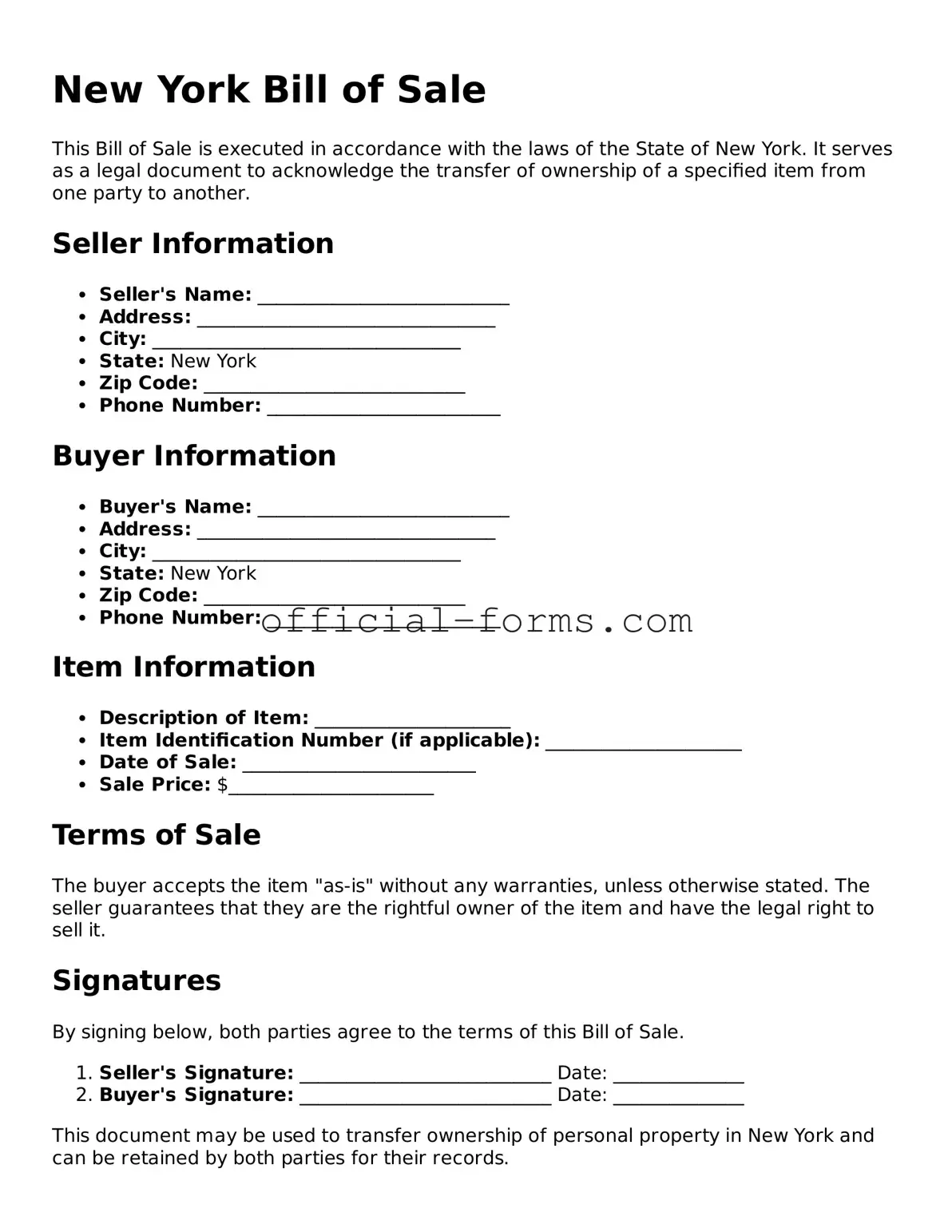When engaging in the sale of personal property in New York, a Bill of Sale form serves as a crucial document that protects both the buyer and the seller. This form captures essential details about the transaction, such as the names and addresses of the parties involved, a description of the item being sold, and the sale price. By clearly outlining these aspects, the Bill of Sale not only provides proof of ownership transfer but also helps to establish the terms of the sale, including any warranties or conditions that may apply. It is important to understand that while a Bill of Sale can be a straightforward document, its implications are significant, particularly in disputes or legal matters. Furthermore, certain types of transactions may require additional information or specific language to comply with New York state laws. Whether you're selling a vehicle, a piece of equipment, or even personal items like furniture, utilizing a Bill of Sale ensures that both parties have a clear understanding of their rights and responsibilities, making it an indispensable tool in any property transaction.
